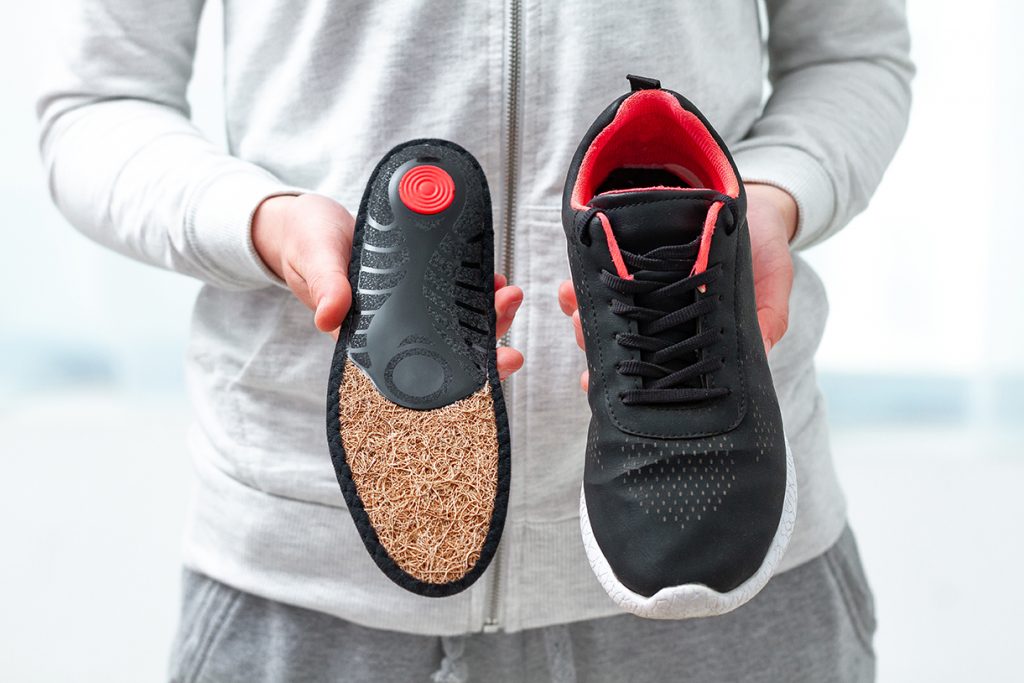For those living with diabetes, foot health is of the utmost importance. Poorly fitting shoes can increase the risk of injuries and ulcers, making it essential to find comfortable and supportive shoes. In this blog post, we will explore the different types of shoes for diabetes and how to choose the right ones for your needs. We’ll also discuss the importance of regular visits to a podiatrist for additional care and treatment. You can ensure your feet remain healthy and safe with the right knowledge and care.
Understanding Diabetes and Its Impact on Foot Health
Diabetes is a chronic condition that affects millions of people worldwide. One often overlooked aspect of diabetes is its impact on foot health. People with diabetes are prone to developing foot problems due to nerve damage (neuropathy) and poor circulation. These complications can lead to various foot issues, including numbness, tingling, infections, and even foot ulcers. Nerve damage can cause a loss of sensation in the feet, making it difficult for individuals with diabetes to detect pain or injuries.
Poor circulation can impair the healing process, increasing the risk of infection and other complications. This is why people with diabetes must take extra care of their feet and wear appropriate footwear. Choosing the right shoes for diabetic patients can help mitigate these risks and prevent potential foot problems. Diabetic shoes are specially designed to provide extra support, cushioning, and protection. They are made with materials that minimize pressure and friction on the feet, reducing the likelihood of developing blisters, calluses, or ulcers.
Diabetic shoes also have ample toe room to accommodate any deformities or swelling that may occur. By wearing diabetic shoes, individuals with diabetes can alleviate pressure points, improve blood circulation, and reduce the risk of developing foot complications. Additionally, proper footwear can provide stability and support, making it easier for individuals with diabetes to walk and stay active.
The Importance of Choosing the Right Boots for Diabetes
When you have diabetes, taking care of your feet becomes even more crucial. Diabetes can cause nerve damage and poor circulation, leading to various foot problems. That’s why choosing the right boots for diabetes is of utmost importance. Diabetic shoes are specially designed to protect and support your feet. They provide extra cushioning to reduce pressure and minimize the risk of developing foot ulcers. These shoes are also made from breathable materials to keep your feet dry and prevent infections.
Wearing ill-fitting shoes can cause blisters, calluses, and even foot deformities, which can be particularly dangerous for people with diabetes. That’s why it’s essential to find shoes that fit properly and provide adequate support. When choosing diabetic shoes, look for certain key features. These include a wide, deep toe box to accommodate swelling, a firm heel counter for stability, and adjustable closures to ensure a snug fit. It’s also crucial to choose lightweight shoes with a non-slip sole for better traction.
Key Features to Look For In Diabetic Shoes
When selecting the right boots for diabetes, certain key features can make all the difference in ensuring optimal foot health. One of the most important aspects to consider is the construction and material of the shoes. Diabetic shoes should be made from breathable materials that allow air circulation, reducing the risk of moisture buildup and potential infections. Additionally, the shoes should have a roomy toe box that provides ample space for toe movement and avoids pressure points.
Cushioning and support are also crucial, as they can help distribute weight evenly and reduce the risk of pressure ulcers. Look for shoes with extra padding and shock-absorbing soles to provide maximum comfort and protection. Moreover, adjustable closures such as velcro or laces can accommodate any swelling or changes in foot size throughout the day. Lastly, it’s important to ensure the shoes have a non-slip sole to prevent slips and falls.
Finding the Perfect Fit: How to Properly Measure and Size Diabetic Shoes
When choosing diabetic shoes, proper sizing is essential for ensuring comfort and minimizing the risk of foot complications. Here are some tips for finding the perfect fit:
Get professionally measured:
To have your feet measured, visit a professional shoe store or a podiatrist. They have the expertise to accurately measure your foot length, width, and arch height.
Measure both feet:
It’s common for one foot to be slightly larger than the other. Measure both feet and choose the shoe size that accommodates the larger foot to prevent discomfort or pressure points.
Consider the time of day:
Feet tend to swell throughout the day, so it’s best to measure your feet and try on shoes in the afternoon or evening when they are at their largest.
Leave some space:
Diabetic shoes should provide ample room in the toe box for proper blood circulation and reduce the risk of pressure sores or blisters. Aim for about half an inch of space between your longest toe and the shoe’s end.
Opt for adjustable closures:
Look for diabetic shoes with elastic closures, such as velcro straps or laces. This allows for fit customization to accommodate any swelling or changes in foot shape.
Consider Style in Shoes For Diabetes
When choosing shoes for diabetes, certain styles can offer added benefits to ensure comfort, support, and overall foot health. One popular option is diabetic shoes with a wide toe box. This feature provides extra space and allows the toes to spread naturally, reducing the risk of pressure points and potential injuries. Additionally, shoes with adjustable closures, such as velcro or buckles, can accommodate swelling and provide a customizable fit. Another style to consider is diabetic shoes with a seamless interior.
Seams can rub against the skin and cause irritation or blisters, so choosing footwear with a smooth interior can minimize these risks. Slip-on shoes or those with a stretchable upper material can also be beneficial, as they eliminate the need for tying laces and can easily accommodate changes in foot size or shape. For individuals with diabetic neuropathy or decreased foot sensation, shoes with added cushioning and shock absorption can provide vital protection.
Look for options with a supportive midsole and a well-cushioned insole to provide maximum comfort and reduce the risk of foot ulcers. Lastly, diabetic sandals and open-toe shoes can be suitable for warm weather or indoor use. These styles allow for better air circulation, which can help keep the feet cool and dry, reducing the risk of infections. However, choosing sandals with appropriate straps and support is essential to ensure stability and prevent any potential injuries.
Treatment Options for Diabetic Foot Complications
Diabetic foot complications can range from mild to severe and require appropriate treatment to prevent further complications and promote healing. Treatment options for diabetic foot complications may vary depending on the specific condition and severity. Here are some commonly recommended treatment options:
- Wound care: Proper wound care prevents infections and promotes healing. This includes cleaning the wound, applying appropriate dressings, and regular monitoring.
- Offloading pressure: Diabetic foot ulcers can develop due to excessive pressure on certain areas of the foot. An offloading strain involves using specialized shoes, insoles, or braces to redistribute weight and relieve stress in the affected areas.
- Antibiotics: In case of infected foot ulcers, antibiotics may be prescribed to control and prevent the spread of infection.
- Debridement: This procedure involves the removal of dead or infected tissue from the wound to promote healing.
- Vascular interventions: For individuals with compromised blood flow, procedures such as angioplasty or bypass surgery may be recommended to improve blood circulation to the feet.
- Hyperbaric oxygen therapy involves breathing in pure oxygen in a pressurized chamber, which promotes wound healing by increasing oxygen levels in the body.
Tips for Maintaining Healthy Feet with Diabetes
Inspect your feet daily:
Check your feet every day for any cuts, sores, blisters, or changes in colour or temperature. Use a mirror or ask a family member for help if needed. Catching any issues early can prevent them from becoming serious infections.
Wash and dry your feet carefully:
Wash your feet with warm water and mild soap, thoroughly cleaning between your toes. Gently pat your feet dry, especially between the toes, as excess moisture can promote bacterial growth.
Moisturize regularly:
Keep your feet moisturized, but avoid applying lotion between your toes. This can create a damp environment, increasing the risk of fungal infections.
Trim your nails carefully:
Trim your toenails straight across and file any sharp edges. Avoid cutting them too short, as this can lead to ingrown nails.
Wear socks and shoes that fit properly:
Opt for socks and shoes that provide a good fit and adequate support. Avoid tight or constricting footwear, which can cause rubbing, blisters, and pressure points.
Avoid going barefoot:
Always wear socks or slippers to protect your feet from injuries, even in the comfort of your home. Stepping on sharp objects or accidentally bumping your feet can lead to serious complications.
Stay active:
Regular physical activity improves blood circulation, essential for foot health. Engage in walking, swimming, or low-impact exercises suitable for your condition.
FAQ’s
How often should I replace my diabetic shoes?
Diabetic shoes should be replaced every 6 to 12 months, depending on the wear and tear. It is important to regularly inspect the boots for any signs of damage or deterioration, such as worn-out soles or seams coming apart. If you notice any signs of wear, it is best to replace your shoes promptly to ensure continued foot health.
Can I wear regular shoes if I have diabetes?
While it is possible to wear regular shoes if you have diabetes, it is highly recommended to wear shoes specifically designed for individuals with diabetes. Regular shoes may lack the necessary features, such as extra depth and cushioning, essential for protecting the feet and reducing the risk of complications.
Can I wear sandals or open-toe shoes if I have diabetes?
It is not recommended for individuals with diabetes to wear sandals or open-toe shoes due to the risk of foot injuries and complications. Consult a healthcare professional for appropriate footwear advice.
Conclusion
In conclusion, taking care of your feet is essential when you have diabetes. Choosing the right shoes can make a significant difference in preventing complications and promoting foot health. Look for shoes that provide ample support, cushioning, and a proper fit. Remember to measure your feet regularly and consult a healthcare professional for specific recommendations. Additionally, stay on top of your foot care routine, seek prompt treatment for any complications, and practice good overall diabetes management to keep your feet healthy and happy. Your feet deserve the best, so prioritize foot health first.
| Other Good Articles to Read |
| Skank Blogs |
| Unreal Blogs |
| Tba Blogs |
| All City Forums |
| Dany Blogs |
| Refuge Blogs |
| The Music Blogs |
| Key Forums |
| The Big Blog Theory |
| Joe Blogs |
| Blogs 4 Me |
| Blogs Emon |



